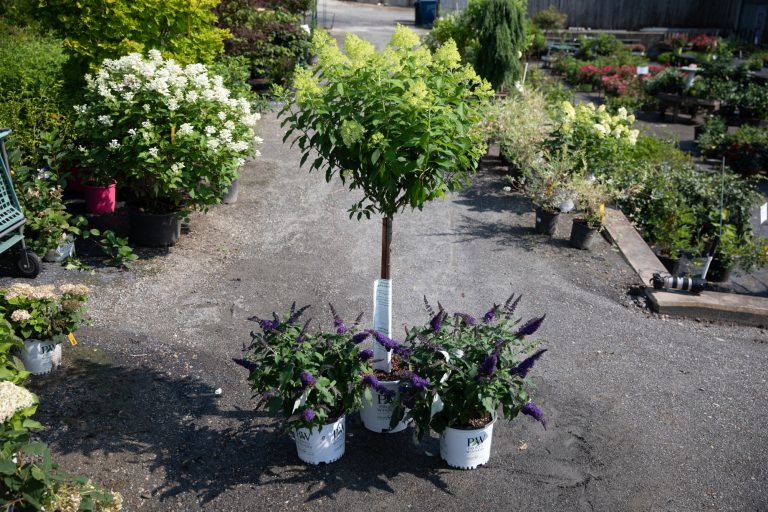Basic Care of New Plantings

Now that you’ve planted, what should you do to keep your plants alive?
All plants benefit from the following garden practices. Consider each below and how it applies to your new plants. Make a plan and you’ll be on your way to a more beautiful, healthier landscape. Purple headings link to additional pages for more information.
WATERING
- Water annuals and vegetables 3 times per week for the first two months.
- Water trees, shrubs, and perennials 2 times per week during the first two months, and once per week until the end of the growing season (early November).
- Keep newly planted sod and seeded lawns moist by watering daily until the first mowing and then water twice per week until the end of the growing season (early November).
- Planters and window boxes may require more frequent watering depending upon their location. Check the soil regularly to become familiar with water needs and frequency as the season progresses.
- Naturally, plan to water more often if we’re experiencing drought conditions.
FERTILIZING
- Fertilize trees and shrubs each Spring and Fall. Follow the instructions provided on the fertilizer packaging.
- Fertilize flowers and vegetables in Spring and lightly fertilize several times during the growing season. Again consult the packaging for the recommendations for your crop.
MULCHING
- Reapply a one to two-inch mulch covering annually.
- Ideal mulches are natural materials like bark, aged wood, dried leaves, and husks– or compost! What’s the difference?
- Take care to keep mulch off the bark of young trees and woody ornamentals.
COMPOST
- Add one to two inches of compost to flower and vegetable gardens annually.
PRUNING
- Fruit trees are generally pruned during late Winter or early Spring.
- Flowering trees and shrubs are best pruned immediately after flowering.
- Evergreens are best sheared during mid-Summer.
- Many pruning resources are online or visit with Ward’s staff horticulturists for advice.
TREE STAKING AND WRAPPING
- Remove guide wires, stakes and wraps after the first year or once the plant has rooted.
INSECTS AND DISEASES
- Consult the UMass Agriculture Extension for specific plant issues by plant at (https://ag.umass.edu/resources/home-lawn-garden) or bring a sample of the potential problem into Ward’s for identification and solutions.
WEEDING
- Weed new planting beds in Spring, Summer and Autumn.
- Use a scuffle-hoe regularly around plantings to quickly inhibit germinating weeds.
- Carefully selected herbicides can help limit weed growth.
WINTERIZING
To help your plants avoid pests and damaging winter weather, you’ll want to take some pre-winter precautions:
- Cut back perennials (unless goal is to spread the plants and provide insect habitat) except Roses and Grasses after several hard frosts. This is especially important when fungus or disease has been a problem during the growing season.
- Cut back annuals after killing frosts but leave roots in the ground to improve soil structure next spring.
- Mound sensitive perennials –like Roses, Caryopteris, Butterfly Bush and tender Hydrangea macrophylla hybrids– with mulch hay, pine bark or soil, in late autumn and remove during early Spring (after signs of new growth).
- Apply deer protection to evergreens before the first snow and continue until the last snow has melted.
Our Summer Garden Advice
By mid-summer, perennial gardens can start to look overgrown, annual flowers begin to fade, and bugs may be munching on your vegetables.
Summer Articles